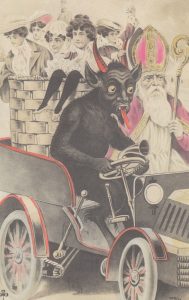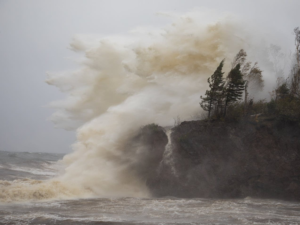In recent weeks, the world has been abuzz about a string of UFO sightings, footage drops, and surprising statements from sober and well-regarded public officials. Long the purview of crackpots, cultists, and the New Age movement, recent sightings are seemingly now being taken seriously by the government and mainstream press alike.
For instance, the following footage, which depicts an unidentified triangular craft spotted by a U.S. Navy vessel, aired on NBC news last month:
Similarly, this segment appeared on the May 16 broadcast of 60 Minutes:
Former U.S. Senate Majority Leader Harry Reid (D-NV) published a New York Times op-ed in which he described his visits to Area 51 as well as a clandestine Pentagon operation, called the Advanced Aerospace Threat Identification Program, which investigated reports of UFOs and similar phenomena involving American military personnel. The conclusions Reid shares are equivocal, but intriguing:
What have I personally learned from official investigations into unidentified aerial phenomena so far? The truth, disappointing as it may be, is that there’s still a great deal we don’t understand. It’s unclear whether the U.F.O.s we have encountered could have been built by foreign adversaries, whether our pilots’ visual perception during some encounters was somehow distorted, or whether we truly have credible evidence of extraterrestrial visitations.
Even former President Barack Obama commented on UFOs in a recent interview: “What is true, and I’m actually being serious here, is that there is footage and records of objects in the skies that we don’t know exactly what they are,” he said.
Apparently, we should prepare ourselves for further disclosures, thanks to an upcoming report. Writes New York Magazine:
One of the many curiosities packed into the $2.3 trillion omnibus spending and coronavirus-relief package passed by Congress in December was a stipulation requiring the Department of Defense and the Office of the Director of National Intelligence to deliver an unclassified report on unidentified flying objects to Congress within six months, compiling what the government knows about UFOs rocketing around over American airspace.
The report — which comes after a slow, four-year drip of reporting and government admissions on UFO sightings — could be delivered to Congress as early as June 1. Regardless of what’s in it, the release will be the most direct and substantive U.S. government account of what officials call unidentified aerial phenomena (UAP) ever made public.
Whatever the report describes, it is sure to be pretty interesting.






 As we continue to face down the coronavirus, and begin to use our time in quarantine to ponder its possible long-term consequences,
As we continue to face down the coronavirus, and begin to use our time in quarantine to ponder its possible long-term consequences, 